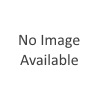 | 1129 | (none) | (none) | (none) | Bowl. Light brown clay. Wheelmade: somwhat unsymmetrical. Type XXVI. |
 | 1735 | (none) | (none) | B15768 | Bowl. Light red clay with creamy slip. P. [drawing 1:1] |
 | 17681 | 32-40-142 | (none) | (none) | Bowl. Pink limestone. Not RC or L [drawing] |
 | 1501 | (none) | (none) | (none) | Box lid. Fragment. Drab clay. With boss handle and snake in relief. [drawing 2:5] |
 | 1541A | (none) | (none) | (none) | Box lid. Red clay, with boss handle and adorned with snakes. Part missing, the remainder in 2 pieces (A and B). Found with and probably belonging to box U.1540. [drawing: not to scale] |
 | 1541B | (none) | (none) | (none) | Box lid. Red clay, with boss handle and adorned with snakes. Part missing, the remainder in 2 pieces (A and B). Found with and probably belonging to box U.1540. [drawing: not to scale] |
 | 17350 | (none) | (none) | (none) | Box lid. Terracotta. Top decorated with a coiled serpent in relief bossin center. |
 | 17351 | (none) | 1931,1010.517 | (none) | Box lid. Terracotta. Top decorated with a serpent in relief. Round boss in center. |
 | 1703 | (none) | (none) | (none) | Box-lid. Fragment, with boss handle and spotted snake decoration. [drawing 1:4] |
 | 1540A | (none) | (none) | (none) | Box. Red drab clay. Adorned with spotted snakes in relief. One end and most of one side broken away, remaining portion broken in 2 pieces (A and B) [drawing: not to scale] |
 | 1540B | (none) | (none) | (none) | Box. Red drab clay. Adorned with spotted snakes in relief. One end and most of one side broken away, remaining portion broken in 2 pieces (A and B) [drawing: not to scale] |
 | 7823 | (none) | (none) | (none) | Brick
not identified
about 26 lines. |
 | 7796 | (none) | (none) | (none) | Brick
Siniddinam inscription, and
marked [drawing of two crescents] = U3115, the only other example? |
 | 2880C | (none) | (none) | B16536 | Brick of Dungi.
"Dun-gi, mighty hero, king of Ur, king of Sumer and Akkad, E-har-sag, his beloved house, has built."
H.C. |
 | 13003 | (none) | (none) | (none) | Brick of Nam-Mah-Ni. New. HC 122. |
 | 3374 | (none) | (none) | (none) | Brick of Warad-Sin, recording his cutting of the canal called Nannar-hul. |
 | 7704 | (none) | 1928,1009.3 | (none) | Brick. Bur-Sin. Concerning Ki-en-nu-ga Uri^ki-ma = Watch house of Uri (inscription on edge). HC.6. |
 | 7715 | (none) | 1928,1009.4 | (none) | Brick. Siniddinam, inscription on edge = U.3115 (some variants?), incomplete and without showing the 2 crescents of U.3115. HC.15. |
 | 18250 | (none) | (none) | (none) | Bronze (?) spatula. Not RC type [drawing] |
 | 6063E | (none) | (none) | (none) | Bronze arrowheads. 3 petal shaped grooves running to a point. |
 | 409 | (none) | (none) | (none) | Bronze fibula. Broken. Poor condition. 9th-5th cent BC type. [drawing 1:1] |
 | 1657 | (none) | (none) | (none) | Bronze implement or weapon. Square in section, tapering to point at one end, thinned out to chisel-edge at other. Broken in two. |
 | 1429 | (none) | (none) | (none) | Bronze implement. Spoon shaped. P. [drawing] |
 | 1428 | (none) | (none) | (none) | Bronze implement. With edge at rounded end. [drawing 1:1] |
 | 1650 | (none) | (none) | (none) | Bronze pin, pierced below head. Point broken off. [drawing] |






















